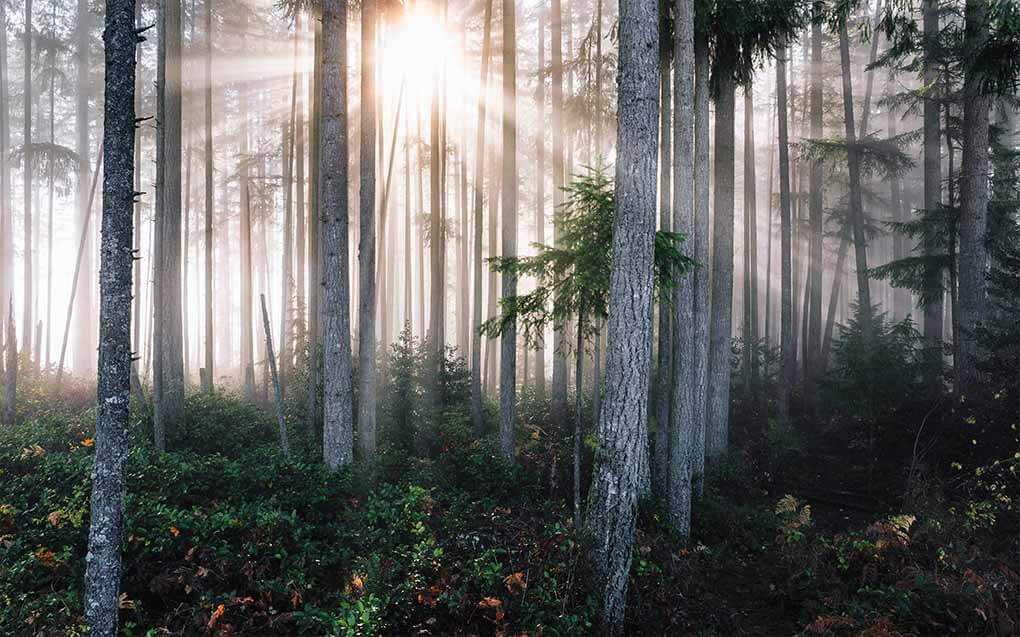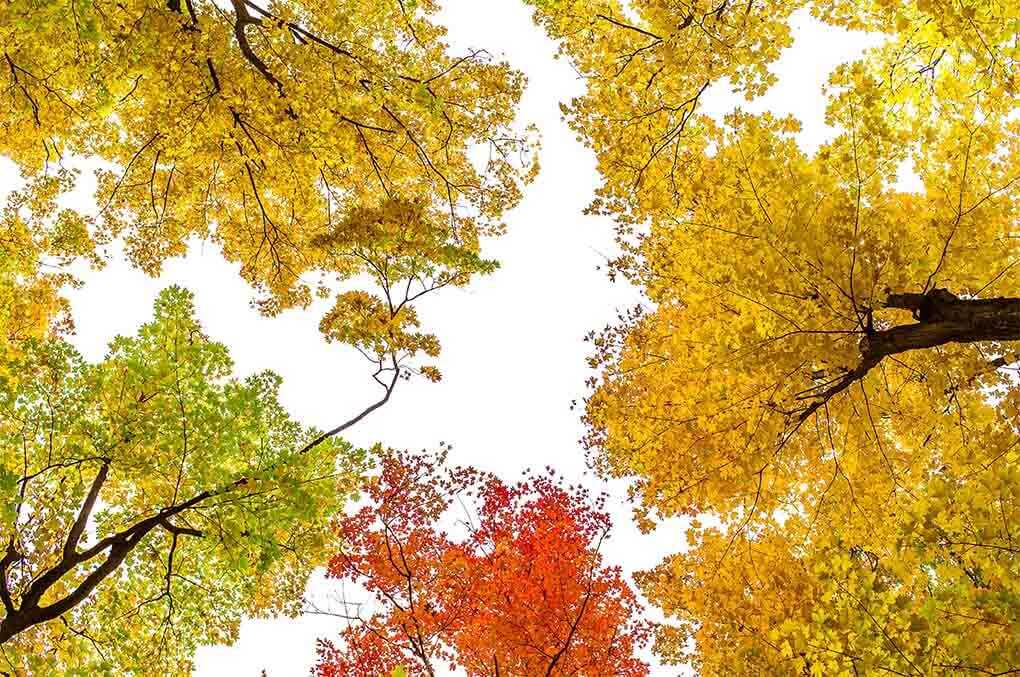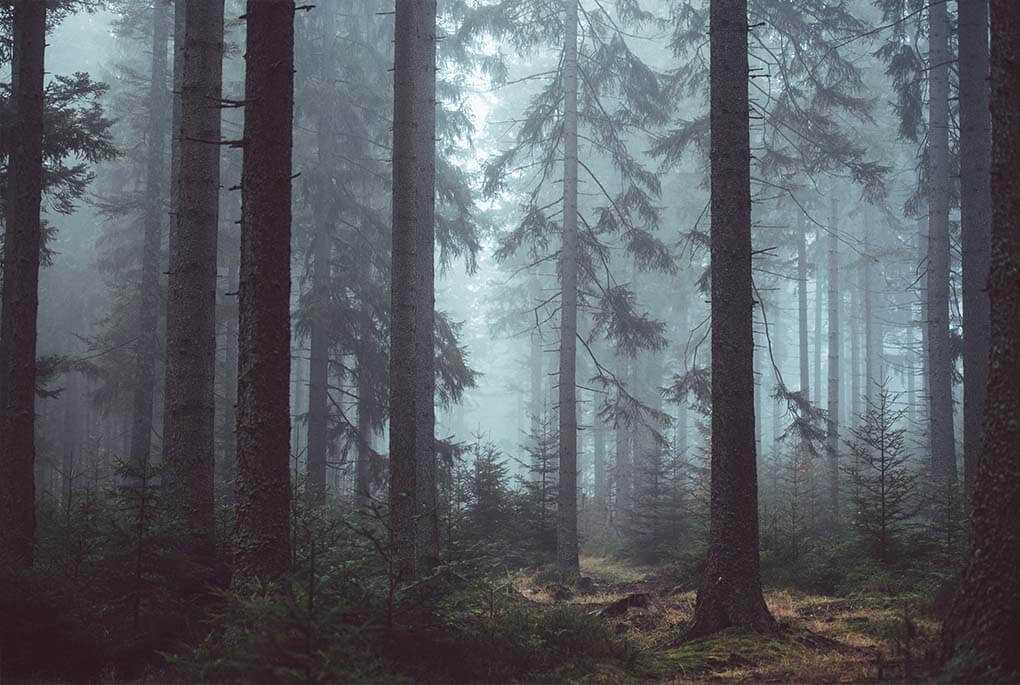
Taking photos in the forest – the supreme discipline of landscape photography
Come rain or come shine –forests have great potential for extraordinary photos in any weather and at any time of the year or day. However, many photographers don’t date to approach the photo location ‘forest’. The reason for this is that taking pictures in the forest is regarded as one of the most difficult disciplines of photography. The ideal image composition and the right lighting conditions for successful forest photography are the most difficult to master. But don’t let this discourage you.
In this article, we will explain to you why you should use the low sun and what effect a little fog in the morning can have on the picture motif. You will also find various tips on how to return from your trip to the forest with a perfect photo.
Preparation and camera equipment for the forest expedition
The equipment for a trip to the forest naturally includes sturdy shoes with a slip-resistant sole. In rainy weather, you should also bring a rain jacket, waterproof overpants and a hat. A pair of long hiking trousers is also recommended. Even in good weather you should wear long trousers and socks, as these protect you from prickly plants and ticks.
Of course the photographer should not forget the most important thing: the camera. For forest photography, you can use a compact camera, a system camera or a reflex camera. The latter is characterised by a wide variety of settings. Important parameters such as exposure time, aperture value and ISO can be manually adjusted to the difficult conditions in the forest. Compact cameras, on the other hand, often have various modes with pre-configured settings for different situations and photo subjects, but they quickly reach their limits under poor light conditions.
In addition, a tripod, a remote shutter release, filters and various lenses make for useful photo equipment in the forest. For example, a wide-angle lens enhances the size ratio between fore- and background, while a telephoto lens compresses or exposes objects. For close-ups, use the macro lens. You can use a polarization filter to enhance the leaf green and the blue sky and to reduce reflections. To create a special atmosphere in forest photographs, you can also use a grey gradient filter. Ideally, you should store the camera and accessories in a photo bag or a backpack with integrated rain protection.
Camera settings for forest photography
The parameters ISO value, aperture and exposure time need to be adjusted to each other. The best way to get the ideal values is to try them out. If you use a tripod to take pictures in the forest, you can choose a longer exposure time and thus stick to the standard ISO value (between 100 and 200). Use a higher ISO value, a lower exposure time and the image stabiliser for flexible shots without a tripod.
You should keep the ISO values in moderate ranges, though, as too high values quickly lead to image noise. As for the aperture: The more closed it is, the greater the depth of field in the image. Use the manual focus for perfect shots and the histogram to control the exposure.

Special lighting conditions in the forest
Light conditions vary greatly in the forest. In sunshine, you may find overexposed or completely black areas while a cloudy sky may offer a very limited dynamic range.
Shaky or blurred images can be the result of sparse light. That is why you should check the results on your display and try a higher ISO value if your photos are blurred. Ideally, you should work with fast lenses and a large aperture, but these are very expensive.
Possible angles and photographing subjects
If you change your perspective or angle you bring variety into your photos – try shooting from a squatting position, lying down or sitting. Frog and bird’s eye views turn your photos into special shots.
Your pictures become really special taken from the frog’s or bird’s eye perspectives. To spare yourself from sitting on the forest ground, it’s wise to bring a plastig bag or similar to sit on.
Keep an eye out for details. As the forst is a living space for plants and animals, there are countless fascinating things to find for your photos. Roots, old and young trees,small plants such as ferns or moss, leaves, cobwebs, mushrooms, streams and rocks are just a small selection of the little wonders a forest has to offer. These details will be vital to your photo.
Capturing the colours and moods of the forest
Fog – Mystical forest images
The mystical mood of the forest can only be captured in a very tight window of time – preferably the early morning hours. The special combination of low direct sun and varying densities of fog create a mysterious atmosphere. Take a wide variety of pictures, with the sun streaming in from the side as well as with backlight. An even more mysterious mood is created when you include ripe cobwebs, mossy soils, ferns, loose undergrowth, hoarfrost, or dew drops in your scenario. You also get a very interesting picture when you combine old and young trees in one photo.
There is no such thing as bad wheather
Don’t let the rain get you down. On the contrary, use it to your advantage! After a good fall of rain, forests shine in the richest colours. Often times, there is even lighting in this kind of wheather, the contract is low and the colours come out very nicely. Everything seems fresher.
Fall and winter also create the perfect conditions for unique pictures thanks to colourful falling leaves and pure white snow around green conifers with the sun in a low position.
When the sun is shining
The combination of light and shade creates a particularly pretty bokeh effect for backlight shots. Both in the early morning ours and the early evening hours the available sunlight provides for beautiful moods in the backlight. Direct sunlight, however, produces strong colours and dramatic shades.

- The best format for your photos is RAW. It enables you to edit your photos in more detail on your computer than a JPEG file would, for example when it comes to increasing the dynamic range of the image.
- To make sure you don’t miss the perfect photo, we recommend working with bracketing.
- Take all the time you need for choosing the subject and composing the image. Scan your surroundings and take close-up photos with a shallow depth of field.
- Go to you favourite spot in the forest in different wheather and take in the many captivating impressions.
- Use vertical, horizontal and diagonal lines such as forest paths, streams or rows of trees. For example, use a curtain of leaves with an opening as a natural frame for the motif of your image. This way, you can direct the viewer’s gaze beautifully.
- Bring order into your picture. A good image composition is decisive for the image effect. It lends depth to the image and directs the viewer’s gaze to specific areas of the image. Make use of foreground, middle and background.
Conclusion
The right behaviour is very important for your trip to the forest. Avoid making to much noise, don’t light any fires, take any trash with you, and don’t harm the plants. Pulling off branches that are in the way will not help you get the perfect picture.
You should be able to take extraordinary pictures in any wheather at all, except perhaps in a storm. Depending on the season, you will capture a wide variety of impressions. A forest has countless fantastic photo opportunities to offer. With a little practice, you can also deal with the limited amount of light and high contrast. Bring light into the chaos of the forest by highlighting individual objects specifically.
The forest has much to offer. You can enjoy your hobby, get some fresh air and bask in the quiet serenity. Take your camera and make your way straight to the nearest forest.